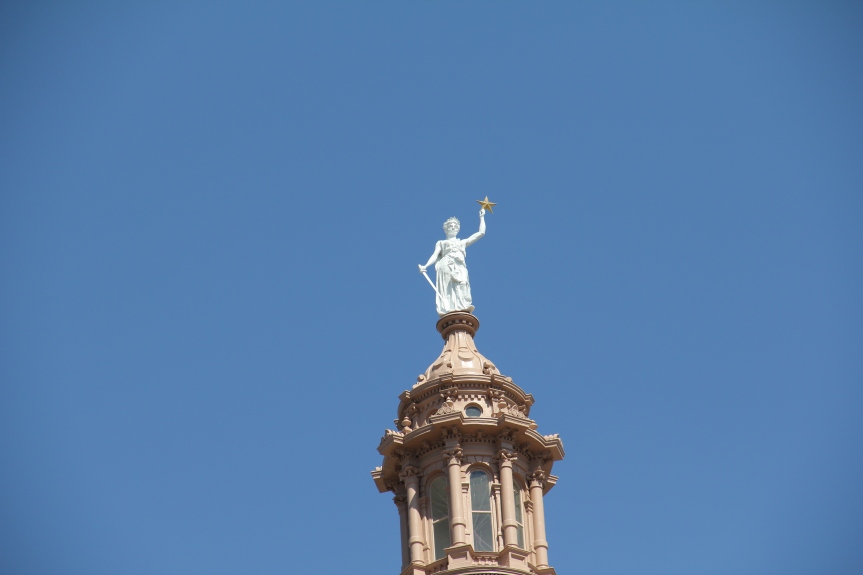 |
| South entrance of Texas State Capitol as seen from the former Texas General Land Office building |
Elijah E. Myers of Detroit was already working on plans for a new State Capitol in 1881 when the 1853 Capitol burned to the ground. A new building was constructed nearby to serve as a temporary Capitol. When the new Capitol was dedicated in May 1888 the steps from the burned Capitol were still on the Capitol lawn.
Original plans called for the Capitol to be constructed from native limestone hauled in from Oatmanville on a railroad constructed specifically for transporting the 25 ton blocks. However, in March 1884, just a month after the railroad was completed, it was determined that the limestone was unsuitable for building with after the first load arrived in Austin. After much negotiating and political wrangling and modification to the original plans it was agreed that red granite from Granite Mountain in Burnet County would be used to construct the Capitol. The date was July 21, 1885. Government moved slowly even then! It would take 6 years and 10 months to complete the Capitol.
- The 1990-1995 Texas Capitol Preservation and Extension Project returned the building to its 1888-1915 appearance and modernized mechanical and safety features.
- A 2010 project painted and refurbished the dome and cupolas.
- A 2-year project completed in 2016 repaired and stabilized more than 700 wooden window frames and their plate glass; many are original to the building (note the scaffolding in some of these pictures made in 2016). In addition, the entire exterior was cleaned, inspected and repaired as needed.
The Texas State Preservation Board oversees the preservation and maintenance of the Capitol and other buildings, including the Governor's Mansion.
At the dedication ceremony in May 1888 Senator Temple Houston, youngest son of Sam Houston, delivered an eloquent address that praised the "noble edifice" and further proclaimed, "The architecture of a civilization is its most enduring feature, and by this structure shall Texas transmit herself to posterity, for here science has done her utmost..."
To be continued.







